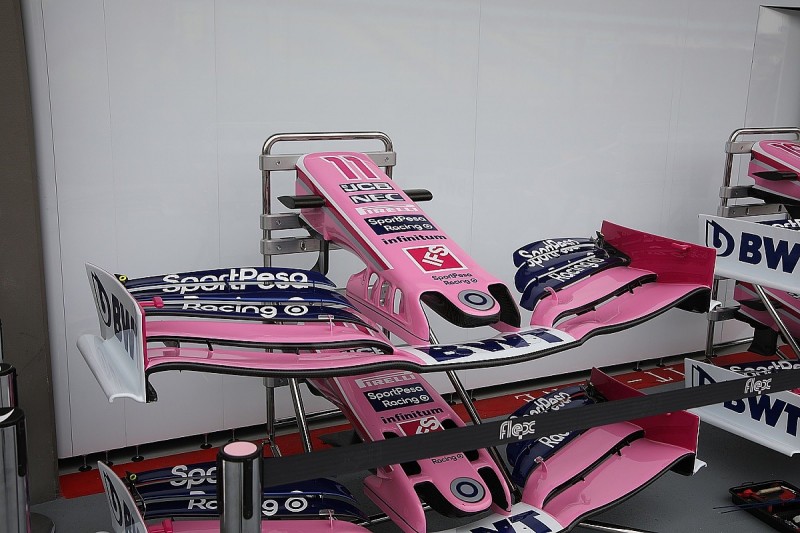Racing Point's "big update" for Formula 1's Singapore GP explained
Racing Point has brought the updates it had promised for the Singapore Grand Prix, most notably adding a brand new front wing to its RP19 Formula 1 car

Having made a number of large changes over the previous rounds, including new bodywork and nose design to overhaul the car, Racing Point has continued its aggressive upgrade strategy.
The additions for Singapore, described as a "big update" by team principal Otmar Szafnauer, are expected to be Racing Point's final large-scale upgrades before the team switches its focus to its 2020 car.
The new front wing follows the trend of using the outboard portion of the wing to drive more airflow outboard while using the inside section to produce the majority of downforce.
At the outboard ends, the wing elements have a low angle of attack [yellow arrow], while the elements on the other side of the flap adjuster bracket are more inclined to develop a stronger level of downforce - required to perform strongly at Singapore.
The upper three flaps have also been reprofiled as a result, compared to the more uniform flap sections on the previous wing, as seen from Giorgio Piola's image below.

This pairs up with a new endplate, which features a prominent cutaway at the footplate as seen by the green arrow in the top image.
Although very similar to the endplate that Racing Point first introduced in practice at Montreal, the new endplate no longer features the small ridge aft of the cutaway.
The footplate's primary function is to create a vortex underneath, as the high-pressure air is drawn below as the car is in motion.
As it does so, it creates a rotation which can then be driven outside, pulling further airflow around the front tyre.
The endplate shape seems to be an attempt to release it earlier, using the endplate to guide it outwards.
The rear wing has only undergone a subtle change as the centre of the mainplane has been raised slightly at the leading edge.
Doing this should boost the overall downforce output by building more camber into the wing, and is augmented at the rear by a new T-wing design.
The T-wing is a new single-element design that bends downwards at the ends to control the placement of the vortices produced at the tips.
Be part of the Autosport community
Join the conversationShare Or Save This Story
Subscribe and access Autosport.com with your ad-blocker.
From Formula 1 to MotoGP we report straight from the paddock because we love our sport, just like you. In order to keep delivering our expert journalism, our website uses advertising. Still, we want to give you the opportunity to enjoy an ad-free and tracker-free website and to continue using your adblocker.



















Top Comments